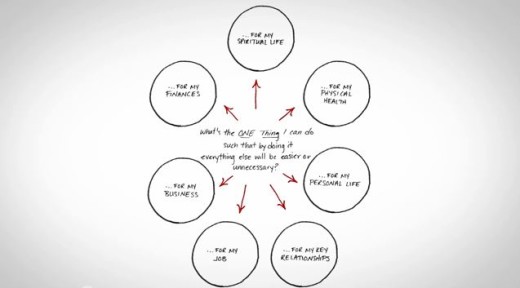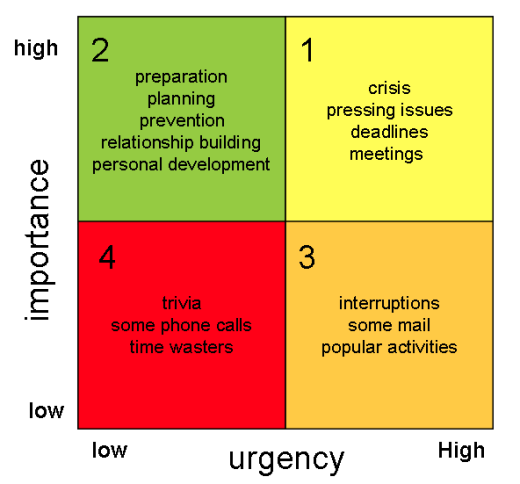
We’re all guilty of procrastination.
We start the day with the intention of doing one thing, and it gets pushed off for later in the day. Then the next day. And soon after, the next week.
It’s a never ending cycle that never seems to get any easier.
Before we introduce the seven research-backed ways to stop procrastinating, here are some guidelines to digest to maximize your success of beating it.
i. Recognize that you’re procrastinating
It’s hard to make any adjustments in your working habits, if you don’t realize that you need it. It’s why AA meetings start by individuals stating “Hi, my name is Jerry, and I’m an alcoholic.”
Of course, we don’t need to take it this far, but being self-aware of your strengths and weaknesses is the first step in effective change.
Signs you may be a procrastinator:
- Filling your day with low priority tasks from your To-Do List.
- Reading e-mails several times without starting work on them or deciding what you’re going to do with them.
- Sitting down to start a high-priority task, and almost immediately going off to make a cup of coffee.
- Leaving an item on your To Do list for a long time, even though you know it’s important.
- Regularly saying “Yes” to unimportant tasks that others ask you to do, and filling your time with these instead of getting on with the important tasks already on your list.
- Waiting for the “right mood” or the “right time” to tackle the important task at hand.
Still not sure if you’re a procrastinaor? Take this self-test on procrastination.
ii. Be open to changing your method
This leads us to the second guideline — open-mindness.
Acknowleging our procrastination is a great first step, but until we open ourselves up to trying new methods, it’s useless.
Advice we get online can be overwhelming, particularly a seven point list that promises to cure procrastination. If you are feeling overwhelmed, then the key is to take baby steps, and start applying only the strategies that you feel will have the greatest impact to your end-result.
This could be a strategy you’ve never tried before, one that you’ve been putting off, or perhaps one you’ve never heard of.
iii. Make your current tasks feel more enjoyable
In order to stop procrastinating, we first have to define what procrastination actually is.
In a nutshell, procrastination is when you put off things that you should be focusing on right now, usually in favor of doing something that is more enjoyable or that you’re more comfortable doing.
If the reason why we’re procrastinating is in favor of doing something more comfortable, then we need to transform our procrastinating tasks into a more enjoyable experience.
Let’s dig deeper into how you can stop procrastinating
1. Get Prepared The Night Before
This simple shift to your day planning can make or break your procrastination, and it takes less than five minutes to complete.
i. Take out a pen and paper (it’s much more effective)
ii. Write down three things you did well today, and three things you could improve on for tomorrow (be constructive, not pessimistic)
iii. Write down the ONE THING that you did, which had the most impact on your goals. Then write down your ONE THING for tomorrow.
2. Discover Your ONE THING
Your ONE THING is a task or activity that has the biggest impact towards your end-result or goal.
Many studies have shown that analysis paralysis is one of the number one causes of procrastination.
Focusing on only one important task, and dedicating time in your day to move it forward can significantly increase your effectiveness.

If you’re not sure what your ONE THING is, Tim Ferriss has a simple framework to help you decide. I’ll summarize it here:
i. Write down no more than 3–5 things that are making you most uncomfortable or anxious. These are usually tasks that may result in rejection or conflict, yet are the most important.
ii. For each item, ask yourself:
— “If this were the only thing I accomplished today, would I be satisfied with my day?”
— “Will moving this forward make all the other to-do’s unimportant or easier to knock off later?”
iii. Look at the tasks you’ve said “yes” to. And schedule 2–3 hours (or however long you need) to complete ONE of these tasks today. No more than one.
If you ever get distracted, which is inevitable, you can simply come back to your ONE THING and gently get back on track.
3. Break It Down
If you’ve ever committed to learning a new skill, or starting a big project, you’ve probably felt the overwhelming sense that naturally comes with it.
Our brains aren’t naturally wired to see the long-term outcome, especially if we’re nowhere near achieving the goal.
We often face internal doubt, and this fear prevents us from starting in the first place.
Break it down, and take it one bite at a time.
For instance, if your goal is to learn a language in 90 days, it can be frightening to think about.
But you can start by breaking it down and scheduling 60 minutes every morning before work to memorize 30 of the most common words.
By the end of 90 days, you would have memorized 2,700 words.
According to Rype, 2,900 of the most common words make up 80 percent of occurrences in a language, which means you would reach at minimum — conversation fluency.
The trick is to think small, and break it down into the tiny actionable to-do’s until you no longer feel the fear of starting.
4. Say No
New activities or tasks are thrown at us on a constant basis.
It could be your boss who wants you to complete a report, a client who’s asking for your support — the list goes on.
We must learn to say “no” to the activities that aren’t bringing our goals forward.
In order to do this effectively, we use a framework called the Eisenhower Matrix here at Rype.

Here’s a plan of action for each quadrant:
1. Urgent & Important: Do it immediately.
2. Non-Urgent & Important: Decide when you’ll do it.
3. Urgent & Non-Important: Delegate to someone else.
4. Non-Urgent & Non-Important: Do it later.
In order to truly make the most of our time, we should maximize our time spent by scheduling a few hours each day on quadrant two.
“Working is one of the most dangerous forms of procrastination.”
— Gretchen Rubin, Author of The Happiness Project
5. Take Care Of Yourself
One of the biggest reasons we procrastinate is the lack of motivation.
Increased levels of motivation comes from simply taking care of ourselves.
Getting enough sleep, eating the right foods, and exercising on a regular basis help to you healthy. Unfortunately, this is often the simplest, yet hardest tasks for a large portion of the population.
According to Medical Daily, lack of sleep and procrastination can turn into a never-ending cycle. With the rise of technology and accessible entertainment, we often procrastinate sleeping on a regular basis. This results in a lack of motivation and further procrastination, and so on…
A quick solution is to perform physical exercise during the day, which will prepare your body for rest. And avoiding any electronic devices two-three hours before bed time will prevent keeping your mind alert, when you need it least.
6. Forgive Yourself
Let’s face it. We’re only humans, and none of us are perfect.
But the last thing we want to do is get hung-up on blaming ourselves.
A study was done on college students at Carleton University during their mid-term exams. The results were that:
Self-forgiveness for procrastinating on a given task is related to less procrastination on a similar task in the future.
This is because the relationship between self-forgiveness and procrastination is mediated by negative effect, such that self-forgiveness can help us to stop procrastinating by reducing negative emotions.
Next time you find yourself procrastinating, forgive yourself, and move on.
Forgiveness is not something we do for other people.
We do it for ourselves to get well and move on.
7. Just Start
In the TV industry, a popular method for getting us to continue watching a show is the cliffhanger. If you’ve ever seen the TV series: 24, then you should be well experienced in the cliffhanger.
They do this, because it kills us not to finish what we started.
Once we start something — a TV show, language learning, project — the task at hand is going to continue to nibble in the back of our minds until we finish the activity.
This is called the Zeigarnik Effect, named after the psychologist Bluma Zeigarnik.

Procrastination is only at its worst before we’ve started, simply because we don’t know where or how to start. Studies show that our perception of the task changes after we start, and we often end up enjoying the task.
What the Zeigarnik Effect teaches us is that you should just start anywhere, and leverage the weakness (or strength) of our natural tendency to finish what we started.
Over To You
What is the one task that you’re currently procrastinating on?
Which of these tips are you going to use to stop procrastinating?
Read Next: A complete guide to designing your morning routine to double your productivity
Image credit: Shutterstock
This post first appeared on Rypeapp.
Get the TNW newsletter
Get the most important tech news in your inbox each week.




